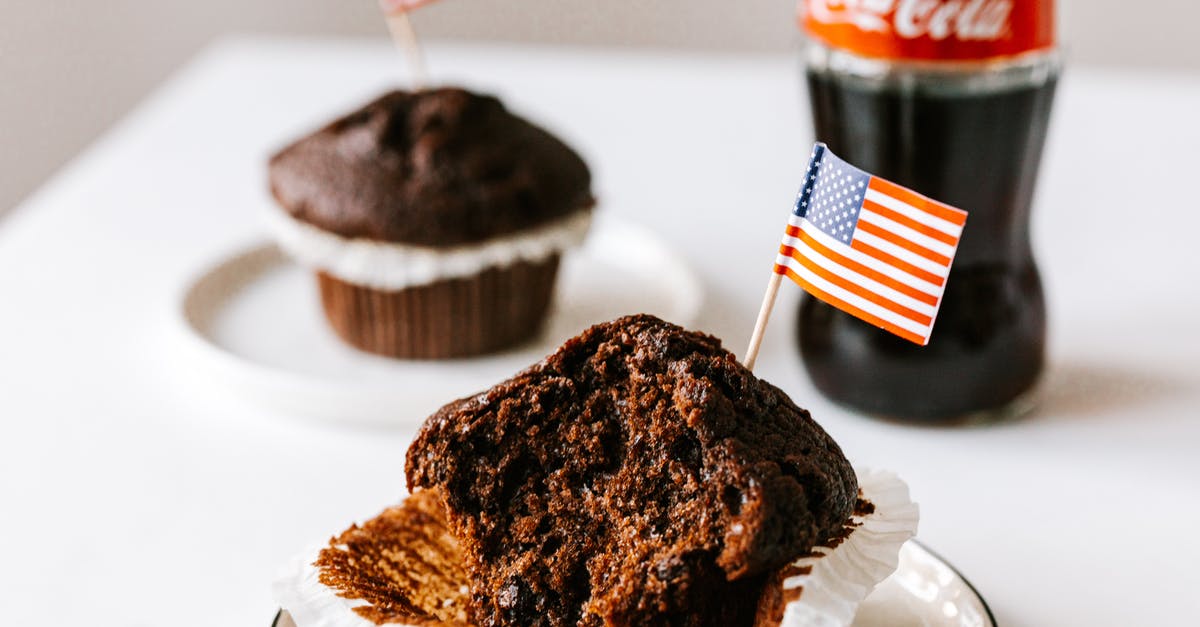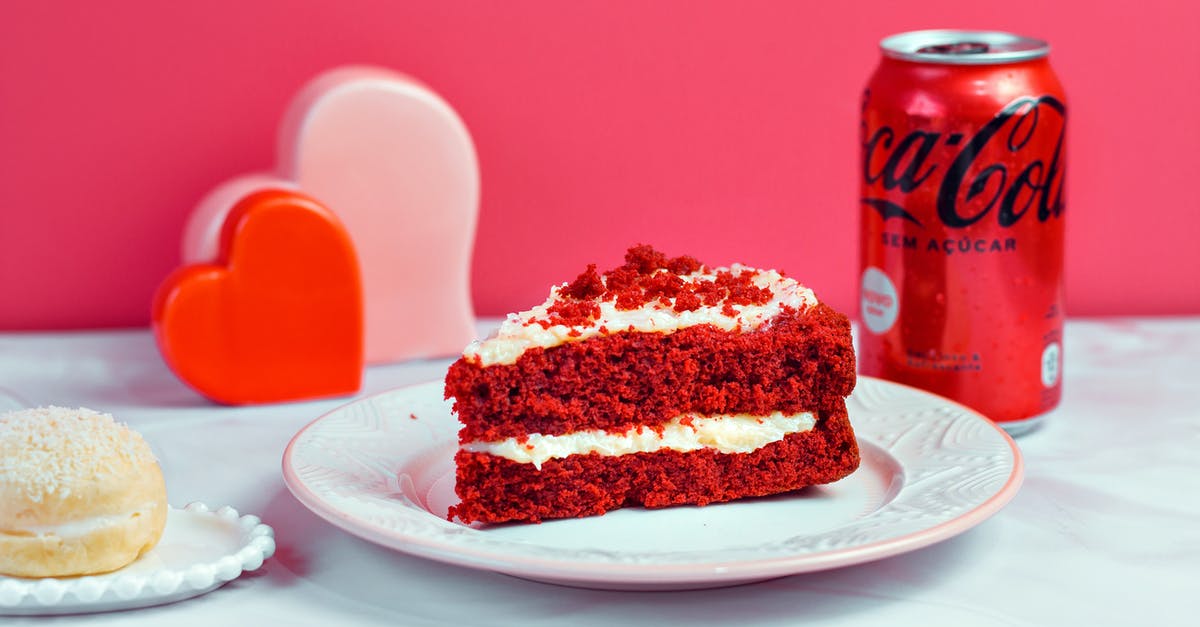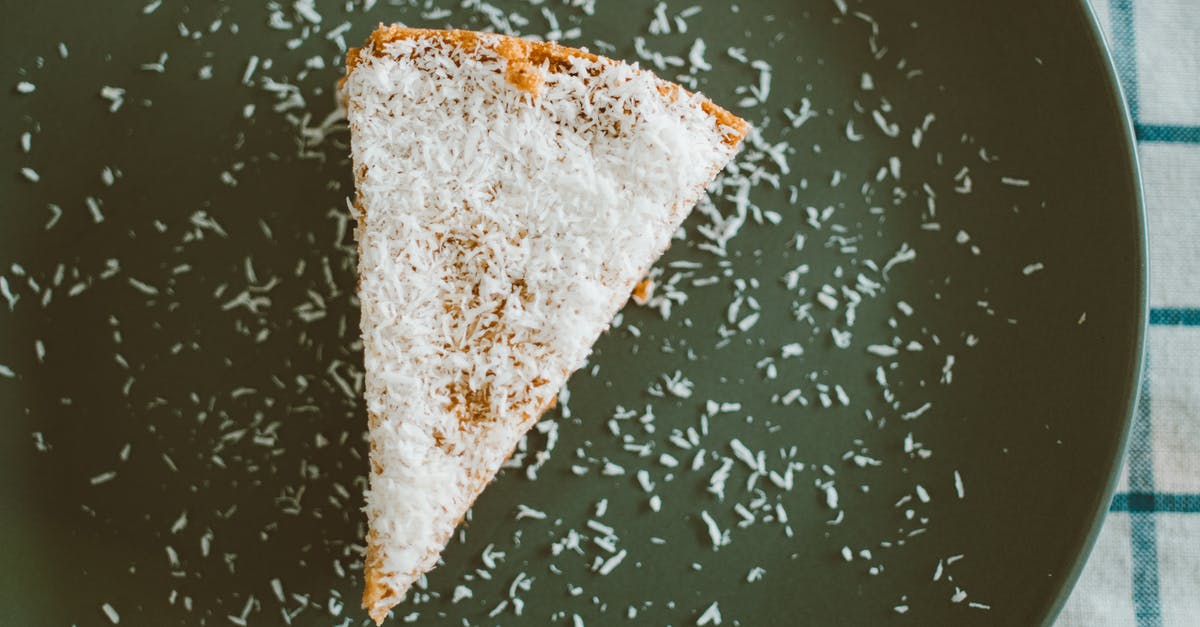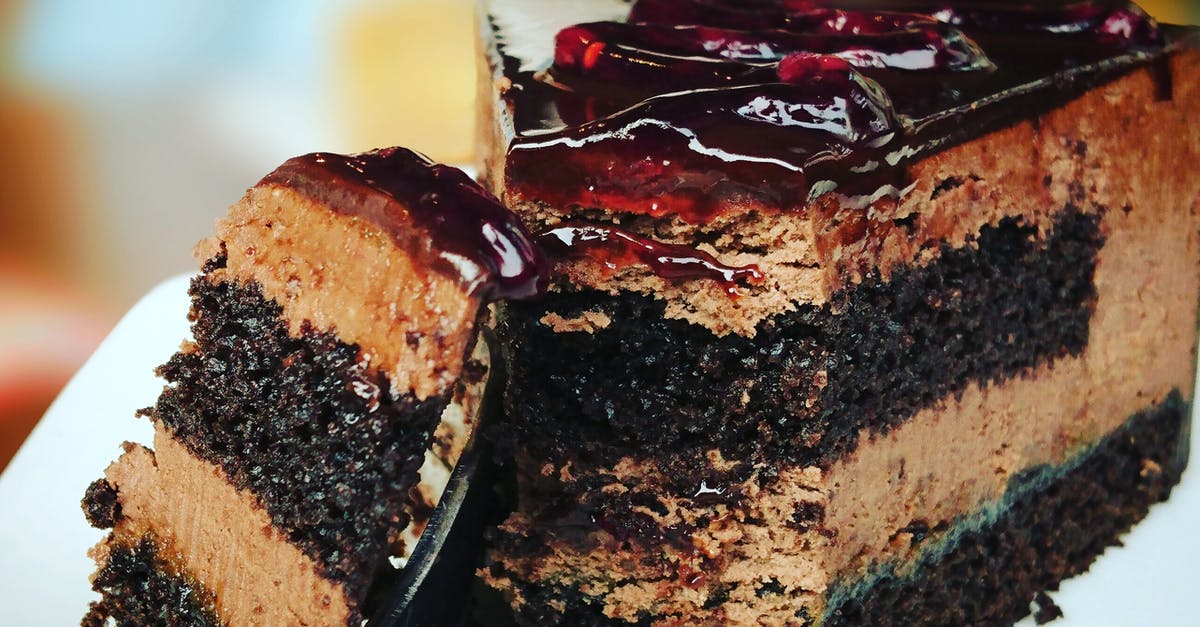Replacements for baking soda in a cake

Sometimes I wish to bake a cake, but the country where I am in doesn't have baking soda. I have tried using actual soda, but this has limited success and the cake tends to just rise and then fall.
I've already read this question on substitutions for baking soda, but that's for pancakes and the main problem seems to be that the pancakes would taste funny. For a cake, where there's a lot more ingredients, I'm hoping that other substitutions would be possible which would not otherwise be possible in a pancake (would the cake also taste like metal by tripling the baking powder?).
Thanks for any help!
Best Answer
Every substitution is probably going to require other alterations. Baking soda's effects extend beyond leavening: it generally reacts with acidic ingredients (making the batter less sour) and also provides sodium ions which can affect flavor. If the substitute doesn't react with acid as strongly, you may need to decrease acid ingredients or substitute neutral ingredients to obtain the same flavor (e.g., milk instead of buttermilk or yogurt, regular cream instead of sour cream). If the substitute doesn't have sodium, sometimes adding a bit of salt may be necessary.
As for the leavening action itself, any substitute will introduce its own issues in adapting. Unless you're experienced with this sort of thing (or like to "experiment" and possibly have cakes that fail in various ways), I would generally recommend finding a cake recipe that has leavening agents you actually have on hand, rather than trying a substitute.
There are really only two common substitutions that often won't affect texture or flavor in major ways:
(1) Potassium bicarbonate - can usually be substituted 1:1 for baking soda, but is generally tougher to find than baking soda. (Look sometimes for it at drugstores; baking soda itself can often be found as "sodium bicarbonate" or some other name in other countries at drugstores too.) Without the sodium ions, you may need to add a bit of salt, roughly 1/4 or 1/3 of the amount of baking soda will be sufficient for flavor.
(2) Baking powder - also often harder to find in other countries than baking soda. Also, other countries may have other formulations than what is found in the U.S. For standard U.S. baking powder, you'd generally use 2-4 times the amount of baking soda in the recipe. The reason for this inexact ratio is a trade-off in flavor vs. reactivity. If you want the same reactivity with acidic ingredients, you'd need 3-4 times more baking powder, but this often results in a "baking powder flavor," sometimes described as "metallic." But if you decrease the amount to avoid this flavor -- maybe twice as much as baking soda -- you won't react with as much acid, so you probably would want to reduce the amount of acidic ingredients in the batter. For baking powder outside the U.S., you'd need to look up the exact formulas/mixtures used and perhaps make further alterations.
(I'm not going to go into the less common chemical alternatives -- like baker's ammonia -- which are even less common for baking today. And I'm not even going to bother with possibilities like homemade potash from wood ashes, which theoretically can provide some leavening. If you're in a country where you're that desperate for chemical leaveners, I'd doubt you'd have access to basic baking materials.)
Unfortunately, as mentioned, these two options are generally less common to find exact equivalents than baking soda. So, we move onto less reliable options that will require further recipe modification.
(3) Egg whites as leavening - separate eggs and beat whites separately, generally to soft or medium peaks. Usually, fold into batter at the last moment (generally in stages, first mixing in a portion of the egg whites more thoroughly to lighten, then gently folding in the remainder) and bake immediately. This will only work by itself with relatively light cakes that don't have a lot of heavy ingredients. Adding a small amount of sugar toward the end of beating may have a stablizing effect and prevent early collapse of a cake. Cream of tartar or a very small amount of other acids like lemon juice or vinegar can also prevent overbeating.
(Note that even if eggs are not separated, beating whole eggs or yolks until light colored will add in small amounts of air.)
(4) Creaming method - ignore recipe instructions and begin by creaming butter and sugar together until fluffy, often requiring at least 10 minutes of steady beating with a mixer for maximum results. (By hand, this generally would be done for an hour or more traditionally.) This will trap air bubbles that will ultimately leaven the batter (the traditional method for pound cakes). This works better than egg whites alone for heavier batters (e.g., with more flour and/or butter), but it still will result in a denser cake than one with baking soda. Generally, continue after creaming butter and sugar by adding eggs one at a time while mixing vigorously, then fold in other ingredients more gently toward the end. (If the recipe calls for a liquid sugar, like molasses or honey or whatever, substitute with dry sugar for more creaming action.)
(5) Yeast - there are entire questions here devoted to the problems of converting a chemically leavened cake into a yeast-leavened one. Yeast is probably the only way to actually get the same volume without baking soda or other chemical leaveners, but it will usually change the cake texture significantly. Basically, yeast cakes tend to be tougher and more bread-like, while chemically leavened cakes tend to go for a softer crumb. You can't quite get such a soft crumb with yeast, since the rising time will create more gluten connections, but you can sometimes get something that's like a "quick-bread" cake. (My experience with baking yeast cakes is that they're really a different genre. But if you're up for experimentation, it might be able to work passable for converting some types of cakes.)
(6) Carbonated liquids - these are more commonly used along with baking soda which will react with their acidity. But substituting a carbonated liquid of some sort (carbonated water, soda, beer) that would complement the ingredients of the recipe could assist in a small amount of leavening action. Again, these should be added quickly at the very end just before baking. I doubt that these could result in adequate leavening alone in most cases, but they perhaps could assist sometimes (along with creaming, beating egg whites, etc.). As noted in the question, the bubbles here tend to be short-lived, so carbonation works best for cakes that bake rather quickly.
Lastly, it should be noted at aerating all ingredients can potentially help a bit -- whether that's just fluffing or sifting flour before mixing, whipping butter, beating whatever parts of eggs, etc. Whether these are at all effective will really depend on the details of the recipe and the order of steps taken, but they generally won't hurt.
The simple fact is that many modern cake recipes depend on chemical leavening to produce adequate lightness. Be prepared for a denser result even with these options, or find a recipe designed to be baked without leavening.
Pictures about "Replacements for baking soda in a cake"



Quick Answer about "Replacements for baking soda in a cake"
- Baking Powder. Like baking soda, baking powder is an ingredient frequently used in baking to promote rise, or leavening, of the final product. ...
- Potassium Bicarbonate and Salt. ...
- Baker's Ammonia. ...
- Self-Rising Flour.
Here's the difference between baking powder and baking soda — and how to substitute one for another
More answers regarding replacements for baking soda in a cake
Answer 2
To replace baking soda, you can use four times the soda's measurement of baking powder. There are other alternatives, such as Natron if you live in Europe or have access to a European marketplace, but they tend to get complicated as acidic ingredients become involved.
New Health Guide has a specific page here dedicated to this question. with not only substitution amounts worked out, but classifications as to when it is best to use one substitute over another. This includes substituting other ingredients for baking soda. So far, they have never steered me wrong.
Sources: Stack Exchange - This article follows the attribution requirements of Stack Exchange and is licensed under CC BY-SA 3.0.
Images: Karolina Grabowska, Lucas Andrade, ROMAN ODINTSOV, Abhinav Goswami
